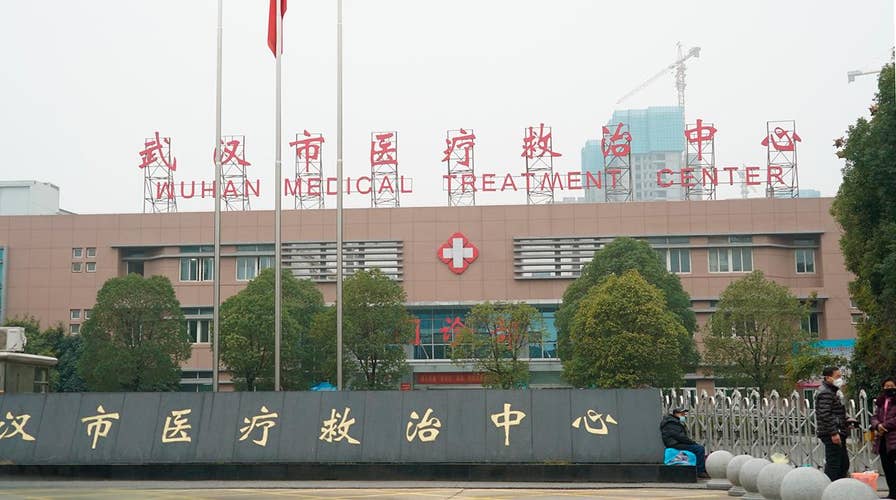China quarantines whole cities to control coronavirus
Fox News medical correspondent Dr. Marc Siegel on fears the virus could spread to America.
The current outbreak in China of Wuhan coronavirus (Wuhan CoV) represents a significant public health challenge.
The outbreak is rapidly evolving. The number of cases and deaths are increasing. As of Thursday, there were 650 documented cases and 25 deaths.
Our understanding of the virus is also increasing at an unprecedented pace. The genetic sequence of the virus is already known as well as its evolutionary relationship to other coronaviruses such as Severe Acute Respiratory Syndrome (SARS CoV).
There are many lessons from SARS and other outbreaks that can help us to understand the current outbreak. It is important to look at both the potential similarities and differences.
For example, both SARS CoV and Middle East Respiratory Syndrome (MERS CoV), a related coronavirus, have bats are their definitive host species and intermediate hosts of palm civets and camels respectively. A similar pattern may be seen for Wuhan CoV.
It has already been determined that the genetic sequence of Wuhan CoV appears to be most closely related to coronaviruses of bats and snakes. Given that the initial infections were linked to fish and animal markets, it is likely that the key host species will be found there.
Like SARS, the current outbreak is expected to be contained. However, the timeframe for containment cannot be predicted with accuracy.
The single case in Washington does not pose a significant threat to the general public. However, it is important to be vigilant to possibility of additional cases among international travelers.
More generally, a single case or even a trickle of cases among international travelers should not lead to fears that Wuhan CoV will break out among the American public.
We must maintain this statistical perspective in relation to the very real health threats of motor vehicles, misuse of drugs, misuse of firearms, and common infectious diseases.
Everyone can make a difference by ensuring that their own vaccinations for influenza and pneumococcal pneumonia are up to date.
With regard to Wuhan CoV, we should not expect any effective drugs or vaccines in the near future. In the long term, a detailed knowledge of the molecular biology of this virus is likely to produce candidate drugs and vaccines.
Education is a critical tool.
Key components of an education program include: educating travelers coming to and from China and other regions of Asia that are affected; educating physicians to ensure they will ask appropriate questions about travel history and about common symptoms, so they will utilize appropriate safety precautions, and to apprise them about where to get additional information; educating the news media; and educating the general public.
The Centers for Disease Control and Prevention in Atlanta have published important recommendations on how to identify and contain people under investigation for infection with Wuhan CoV.
Based on the transmission of SARS coronavirus, these recommendations include the use of “airborne, droplet and contact precautions” including the use of gloves, gowns, N95 respirators, and eye protection in the form or goggles or face shields.
It is critical to stop the outbreak in Asia. The most important way to do this is to facilitate communication and cooperation between all the countries and agencies involved. This is where the majority of our resources should be directed. There are several reasons for focus our efforts on this.
First, this will minimize the overall amount of human suffering resulting from this virus.
Second, this will decrease the probability that new cases may spread to other regions, including the U.S.
CLICK HERE TO SIGN UP FOR OUR OPINION NEWSLETTER
Third, this will decrease the opportunity for the virus to evolve into even more virulent forms as it passes through a large susceptible population.
And fourth, this increases the probability that Chinese officials will keep us apprised of new developments with this virus as well as future outbreaks.
While this virus had spread to several Wuhan hospitals before it came to the attention of the outside world Dec. 30, the delay was far less than was seen with the SARS epidemic. In that case, earlier knowledge of the virus may have facilitated the earlier institution of effective control measures.
CLICK HERE TO GET THE FOX NEWS APP
It is critical to emphasize the importance of maintaining and bolstering the public health infrastructure at the local, national and international levels. This bulwark plays a vital role in detecting, characterizing and containing infectious threats like Wuhan CoV, SARS, Ebola, influenza, and unknown threats that we are to encounter in the future.
More importantly, in the words of Nobel Prize winner Baruch Blumberg: “When public health works, nothing happens.”





















